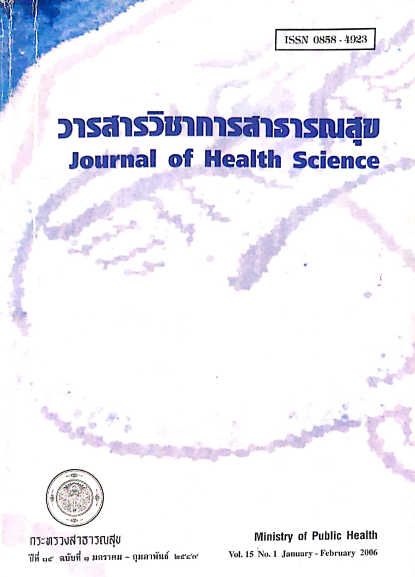Laboratory Examination for Narcotic Drugs and Psychotropic Substances Used among Drug Users in Thailand
Keywords:
drug in urine, laboratory analysis, amphetamines, ecstasy, benzodiazepinesAbstract
The government policy on drug suppression increases demands on drug analysis in urine samples. The main agencies which carry out such analysis are 12 Regional Medical Sciences Centers and Bureau of Drug and Narcotic, Department of Medical Sciences, Ministry of Public Health, Thailand. In 2004 at laboratories of those agencies 17,714 samples collected from drug users were examined for drugs and psychotropic substances. Most of the samples, 57.98 percent, were sent from the Royal Thai Police, the rest were sent from the Office of Probation (19.50%), hospitals or health clinics (13.07%), private enterprises (4.26%), and education facilities (1.71%). Geographically, most samples (52.34%) were sent from the Central region of Thailand. The rest were sent from the North (19.65%), the Northeast (15.62%) and the South (12.39%). The identification by gender showed, 81.27 percent of the samples were collected from men and 14.80 percent were from women. Laboratory investigation revealed that there were 9,119 specimens (51.48%) tainted with drugs and 4.64 percent of these containing more than one type of drugs. The types of the drugs identified were methamphetamine (76.74%), cannabis (13.84%), ecstasy (3.28%), benzodiazepines (2.97%), opiates (1.64%), pseudoephedrine (1.45%), ephedrine (0.05%), ketamine (0.03%). Cocaine was not found.
Downloads
Downloads
Published
How to Cite
Issue
Section
License
Copyright (c) 2019 Journal of Health Science

This work is licensed under a Creative Commons Attribution-NonCommercial-NoDerivatives 4.0 International License.







